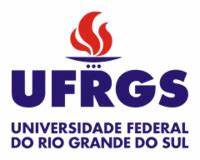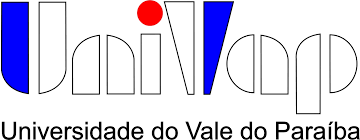A diretoria da Sociedade Brasileira de Geofísica Espacial e Aeronomia vem a público manifestar o mais profundo pesar pelo falecimento do Dr. Michael C. Kelley da universidade de Cornell, referência na área de Física da ionosfera, ao mesmo tempo em que presta condolências a familiares e amigos pela irreparável perda.
++++++++++++++++++
Mike Kelley, pioneer of electric field measurements in space, renowned expert on the physics of the ionosphere, inspiring teacher and mentor, died peacefully in Ithaca, NY on June 23, 2018. He was 74.
A highly accomplished scientist in the field of ionospheric physics, Mike literally “wrote the book” on the ionosphere, having authored: The Earth’s Ionosphere: Plasma Physics and Electrodynamics, a seminal text now in its second edition with Academic Press.
A fervent experimentalist, Mike frequently combined measurements gathered with instruments carried into space on NASA sounding rockets with observations from NSF ground-based incoherent scatter and coherent scatter radars, consistently using the integrated scientific data to address unanswered questions regarding important physical processes. To this end, Mike led numerous NASA/NSF campaigns to international sites such as Peru, Puerto Rico, the Marshall Islands, and Greenland and was known for organizing multi-faceted research activities within the wider scientific community.
Mike joined the UC Berkeley Physics Department as Forrest Mozer’s first graduate student, helping to pioneer the development of electric field double probes and launching sounding rocket experiments to study both DC electric fields and plasma waves. In his career, Mike provided electric field experimental hardware and/or analyzed results on over 70 sounding rockets, 4 satellites, and numerous balloon flights.
Highlights of Mike’s many achievements (many carried out with electric field experiments on sounding rockets) include: in-depth studies of plasma turbulence in the equatorial ionosphere and the auroral zone, innovative techniques to determine plasma wave k vectors using multiple sensors on spacecraft, measurements of electrojet instabilities and their non-linear evolution, break-through observations of DC-coupled electric fields in space associated with tropospheric lightning with which Mike discovered that significant pulsed electric field energy penetrates into the ionosphere above lightning storms, direct measurements of Poynting flux with combined electric and magnetic field waveforms, studies of Alfven’s critical velocity effect, measurements from a rocket flown through the Arecibo heater beam to reveal parametric instabilities, an explanation of the long-standing enigma of polar summer mesospheric echoes at short wavelengths, simultaneous observations of sodium layers with rocket probes and a lidar, and an explanation of turbulent upwelling at mid-latitudes involving the Perkins instability.
During his distinguished career, Mike published more than 400 articles in the refereed literature. In addition to his text on ionospheric physics mentioned above, he wrote several other monographs including one entitled, “The Earth’s Electric Field: Sources from Sun to Mud,”published byElsevier in 2013 (written with R. Holzworth) as well as many reviews and articles for the general public including “Plasma: The Fourth State of Matter,” for the Encyclopaedia Britannica.
Mike was born on December 21, 1943 in Toledo, Ohio, and grew up in Toledo and Detroit, Michigan. He attended Kent State University from 1961 to 1964 on an athletic scholarship, playing varsity basketball and majoring in mathematics. At Kent State, he won the Bordon and Manchester awards as outstanding Freshman and Senior man, respectively. Mike spent two summers at the Woods Hole Oceanographic Institute and then carried out graduate studies at the Physics Department of the University of California at Berkeley, earning his Ph.D. in 1970. In subsequent years, he was a post-doctoral researcher at Berkeley and held an appointment as a Von Humboldt Fellow with Gerhard Haerendel at the Max-Planck-Institute in Garching, Germany. In January 1975, he joined Cornell University as an Assistant Professor, advancing to full Professor in 1982.
Mike received many distinguished awards, including the James B. Macelwane award from the American Geophysical Union of which he was a Fellow. He gave the AGU Nicolet lecture in 2011, and received numerous teaching awards from Cornell and the IEEE. In 1998, Mike became a Weiss Presidential Fellow, the most prestigious award for teaching at Cornell University, and in 2001, was elected the James A. Friend Family Distinguished Professor of Engineering. Mike was an associate of the National Academy of Sciences and was chair of the National Academy of Sciences Committee on Solar Terrestrial Research and co-chair of the National Research Council Heliophysics Decadal Survey Subcommittee on Atmosphere-Ionosphere-Magnetosphere Coupling.
Mike is survived by his wife, Patricia, of 52 years, his three children Scott (Varykina), Brian (Elizabeth), and Erica, three grandchildren (Aidan, Owen and Amelia), and his brother Edward Arthur Kelley, Jr. Mike and Pat were very active in the regional foster child program and were parents to almost a dozen foster children. Mike was a life-long athlete — besides being an avid runner, he played basketball, volleyball, tennis, and golf, well into his later years. He also loved to journey about the planet and indeed felt that science was an adventure.
Beyond his many scientific achievements, Mike’s legacy includes legions of graduate students whom he mentored (including 28 PhD students), many of whom stayed in the field and are now professors themselves. He was extremely open-minded and had an infectious enthusiasm for science and experimental research that stayed with him his entire life. An unparalleled leader in ionospheric research, Mike Kelley was a great scientist and human being — a true inspiration to us all.
Source: https://www.ece.cornell.edu/news/index.cfm?news_id=96646


